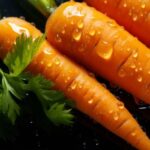Bringing a new kitten into your home is an exciting time, filled with questions about their care, especially when it comes to feeding. If you’re wondering about the right time to introduce solid food and water to your little feline friend, you’ve come to the right place.
Around 4 weeks old marks a significant milestone for kittens. This is when you can gently begin the weaning process, gradually introducing them to both solid food and fresh water. This period is crucial for their development, and understanding the process is key to ensuring they grow into healthy, happy cats. Let’s delve into the specifics of when and how kittens transition to food and water.
Understanding Newborn Kitten Nutrition
In the first weeks of life, a kitten’s nutritional needs are entirely met by their mother’s milk. Mother’s milk is especially vital in the first 12 to 24 hours after birth because of the colostrum it contains. Colostrum is rich in essential antibodies that provide crucial immune support to newborn kittens. It’s essential that each kitten in a litter, regardless of size, receives this initial milk.
However, there are situations where kittens may not have access to their mother’s milk. In these cases, kitten milk replacement formula becomes essential. While a temporary homemade formula can be used in emergencies, it’s crucial to obtain a quality kitten milk replacement formula as quickly as possible.
If mother’s milk isn’t available, kittens should be fed milk replacement formula for approximately 3 to 4 weeks. Newborn kittens require frequent feedings, typically every 2 to 3 hours throughout the day. For guidance and support in these situations, reaching out to a local animal shelter or veterinary clinic is highly recommended.
The Kitten Weaning Timeline: Introducing Solid Food
The weaning process, which is the gradual transition from milk to solid food, typically starts when kittens reach about 4 weeks of age. Orphaned kittens might begin this process slightly earlier. You may notice signs that your kittens are ready for weaning when they start showing interest in their mother’s food, even if she gently discourages them. If you are bottle-feeding, kittens ready for weaning might start chewing on the nipple or seem less satisfied after their milk feeds.
To initiate weaning, create a mixture of wet kitten food and kitten formula. This helps kittens become familiar with the taste and texture of solid food while still providing the nutrients of formula. Offer a small amount on your finger, allowing them to lick it off, which encourages them to explore the new food. You can then introduce a shallow bowl, ensuring they don’t eat too quickly at first.
Around 4 to 6 weeks old is the optimal window to gradually transition kittens fully to solid food. Continue supplementing with formula as needed during this transition to ensure they are getting adequate nutrition. When initially introducing solid food, especially dry kibble, it’s beneficial to soak it in water. As kittens mature and become accustomed to solid food, you can reduce the amount of water used to soften the kibble.
When Kittens Begin Drinking Water
As kittens naturally wean from their mother’s milk around 4 weeks old, this is also the time they should start drinking water, alongside eating solid food. Water becomes increasingly important as they transition away from the hydrating milk diet to solid foods. Interestingly, kittens often display curiosity about water even before weaning, playing with and exploring water sources.
By 5 to 6 weeks of age, kittens will be getting a significant portion of their hydration from water, especially if they are eating moistened kibble. By 7 to 8 weeks old, kittens should have fully transitioned to eating solid food and drinking water independently. Ensuring fresh water is always available is crucial during this stage.
How Much Water Do Kittens Need?
The amount of water a kitten needs varies with age and size. Generally, kittens up to 3 months old require approximately 2.3 ounces of water daily. As they grow, reaching around 6 months old, their water intake should increase to about half a cup per day. Keep in mind that kittens also get hydration from wet kitten food or kibble soaked in water, so these are general guidelines. Individual water needs can also fluctuate based on a kitten’s weight and activity level.
As kittens mature into adult cats, their water consumption will gradually increase. A general recommendation for a 10-pound adult cat is about one cup of water per day. Always monitor your kitten’s water intake and ensure they have access to fresh, clean water at all times, especially as they transition to solid foods.
Final Thoughts
Once your kitten has completed the weaning process, usually around 8 weeks of age, they should be regularly eating solid kitten food and drinking water. Initially, they will get a good amount of their hydration from moistened kibble, but as they fully transition off milk formula, constant access to fresh water is vital.
Proper hydration is crucial for kittens once they are no longer drinking their mother’s milk. Ensuring they drink enough water is essential to prevent dehydration and support their overall health and well-being as they grow into healthy adult cats.

